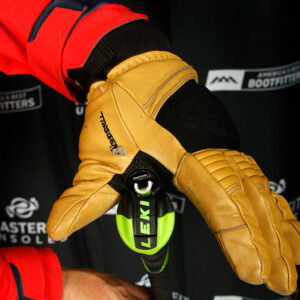How to Get a Good Fit for Hiking Boots: 5 Must Know Facts About Getting a Great Fitting Hiking Shoe
As the hiking season is in full stride, it’s a great time to think about getting out on the trail. The sun and sweet smell of Summer invites us all to get out and get some exercise on the trail – especially after a long Winter of deep snow and cold temperatures. So as the days are longer and the urge grows stronger, it’s time to look for new hiking boots or shoes (depending on your preference) to make your trip the best it can be.
We asked industry veterans their thoughts about some things to think about when shopping for a new boot and how to get a good fit for hiking boots. Here’s what the experts suggested.
“When looking for new hiking boots, there are a few rules to keep in mind. While technology has heightened the fit and performance of hiking boots and shoes, there are specific things to take into account to get the best fit possible,” says Jeff Rich, certified podiatrist and owner of U.S. Orthotic Center in New York City.
When you go shopping for new hiking boots or shoes, take some time to try on five to eight pairs across a variety of brands. Be sure to try on all types of hiking boots as the selection has grown over the years and hiking boots come with many different styles such as ankle hiking boots, mid-height hiking boots, high-top hiking boots and trail hiking boots, and even backpacking boots.
While you’re testing out the hiking boots sizing, be sure to walk up and down some stairs and ramps in the store if possible. Also, concentrate on the overall comfort of the boots. Take into account the hiking boot fit such as the hiking boots width, the arch support, the heel lock, and the hiking boots toe box. Are there hotspots or pain points? If so, move on the next pair because these will be accentuated while on the trail and most likely make your hike miserable.
It’s best to shop for boots in the evening because your feet swell throughout the day – they usually expand by five-percent. Also, bring or wear the socks you’ll wear when hiking and try on both boots because most of us have one foot that’s longer and/or bigger than the other.
Furthermore, keep in mind that shoe sizing is not standardized, so sizing between manufacturers is not consistent – sizes may even vary within certain styles of a particular brand. So, as we outline best practices to shop for boots, here are five things to keep in mind to find your best-fitting hiking boot.
Measure the Length
As we mentioned, one foot is usually longer and/or bigger than the other, so be sure to try on both boots. Start by slipping your bigger foot into the boot/shoe, and standing up while the laces are untied and loose. Push your foot forward until your toes touch the front of the boot, and measure the space between the back of the shoe and your heel. You should allow two fingers – your index finger and your middle finger – to comfortably fit between the end of the shoe and your heel. (You might need some help with this measurement.) If there’s too much, or too little space between your fingers and the back of the boot, the boot is too small or big, so look for another size.
If your fingers fit nicely, lace up the boots and start walking around the store. If your heel slips once you’ve tightly cinched the laces, consider swapping out the existing insoles for a pair of after-market, drop-in insoles such as EZ-Fit Universal Insoles or custom-crafted insoles like Instaprint Insoles. Using insoles will eliminate the extra space in the boot that makes your foot slip – and they’ll be more supportive and comfortable.
While the boots are laced, stand up, and wiggle your toes. If your big toe is close to the front, but not touching, you should be fine. However, if your toe is at, or more than a thumbs distance away from the toe box, the boot is too big. As a general rule, if there’s a full thumb’s-width of space between your big toe and the front of the toe box, the boots are too big and could cause blistering.
Next, kick a wall with the front of the boot two-to-three times – it simulates hiking downhill, which will take a toll on your toes. If the shoe is too short, your toes will jam into the front of the boot on the first try. Conversely, if the boot is too big, your feet will just slide back and forth after multiple kicks. If you can kick three times without your toes hitting the front of the boot, you have a pretty good fit.
If your toes feel ok and have a comfortable fit, then roll forward on them and see if your heels rise. If the boots fit, your heels won’t move up and down inside the boot more than 0.25 of an inch, which allows your achilles to stretch. If your heels move more than that, they will move on a hike and create blisters and make your life miserable. Move on to the next boot or size.
Measure the Width
With the boot laces cinched tight, try to move your foot from side-to-side. If they move drastically, the boots are too big. Conversely, if they feel awkwardly tight, they’re too small. However, if the boots feel snug and your feet move a little from side-to-side, but not in an uncomfortable way, then you should be fine. As Bob Egeland, C.Ped of Boulder Orthotics in Colorado puts it, “proper width means a snug, but not pinching, fit across the ball of your foot. And keep in mind, most boots will stretch significantly and fit better the more you wear them.”
Consider the Hiking Boots Arch Support
Arch length is the measurement from the heel to the ball of the foot and is a more important measurement than the foot length. It determines how the foot fits inside the boot, which determines the boot’s support and functionality. The arch length is very important because the shoe needs to flex at the appropriate location for proper function and comfort. C.Ped Egeland continues, “supplemental arch support under the foot is extremely important, especially when you’re carrying extra weight in your pack.” Make sure your arch feels comfortable, otherwise, your achilles and calf could be strained, which will make you uncomfortable, no matter how long the hike.
Foot Volume Matters
Without any socks on, slide your bare foot into the boot and concentrate on how it feels. Take note of any spots that feel cramped–particularly around the small, pinky toes, the ball of the foot, and the arch. If it’s too tight in any of these areas, look for another boot.
If the boot passes the barefoot test, put on your hiking socks and ensure there are no loose or wrinkled spots. Again, slide your foot into the boot and feel for tight areas. If there aren’t areas that are too tight or too loose, it should be a good foot. The boot should feel comfortably snug all around the foot and not have any pinchy or hotspot areas – they will only cause problems on the trail.
Remember, the thickness of the foot and the arch support from top to bottom is an important factor to measure a good fit. Some people prefer a tight fit, while others favor a loose fit. Determining a good boot fit depends on how you like your foot to feel inside the boot while moving, so trust yourself. Just make sure that if you do have one foot bigger than the other, it gets the best fit – and you don’t want your foot to move very much inside the boot.
Test the Ankle Area
The ankle test comes into play if you prefer a high top boot over a low top shoe. It’s important to remember that two-thirds of your ankle support comes from the outsole, midsole and insole (footbed) – one-third is from the upper. A high top hiking boot offers extra support against twisting an ankle on rough terrain and helps people with weaker ankles.
To measure the ankle fit, grab the top of the boot and bend it to the side – this will give you a good idea of how much ankle support the boot will provide – the stiffer it is, the more supportive it will be. As you compare the stiffness with different styles, you can find the one that will provide you with the best support depending on your preference and needs. Remember, an all-leather upper is more durable and most likely lasts longer than a fabric or fabric and leather combination, so keep that in mind.
Remember the Sole
The outsole must provide good durable traction in all conditions. There are some hiking boots on the market these days with sticky rubber, which provides greater traction, but they wear out much quicker. EVA midsoles (the lightweight foam used in running shoes) are lightweight, but not very durable, which requires you to replace boots frequently.
So when you examine a boot, dig your fingers into the sole to see how soft it is. A soft sole will not give you as much support as a more rigid one. Twist the sole and notice that if it twists easily, it’s also probably too soft to support you while hiking rough terrain. Polyurethane midsoles are very durable but they’re slightly heavier than a foam one.
Conclusion
If after all this scrutiny you’ve managed to find a pair of boots that match your criteria, then they have a pretty good chance of being your trusty hiking companions. But remember, no boot is perfect until it’s been broken in properly, so break them in, take mini hikes, walk around the house or go shopping and run errands in your new boots to make them mold to your feet. The heat of your feet will work in the leather and other materials and make them more comfortable. It will also identify any hotspots to be concerned with before you’re on the trail. The more you wear them before your next hike, the more comfy they’ll be during the hike. Enjoy your time on the trail.

































